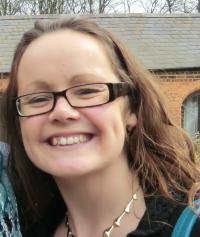
We all know the importance of professional development, and taking an online editing course is a great way to improve your editing skills. But how do you decide which course(s) to take? In this blog post, Claire Bacon reviews the SfEP’s Copy-editing Headway course.
The need for training
I am an ‘invasive species’ in the editing world. I did not set out to become an editor – instead, I spent more than a decade working as a research scientist. My postdoc years were spent in Germany, and I soon realized that lots of non-native English-speaking scientists need help getting their research published. Indeed, I spent many hours editing manuscripts for my colleagues. I realized that not only did I enjoy it, I was good at it, and my fate as a language editor was sealed. Bye-bye lab, hello working at home in my pyjamas!
Sure, research experience and subject knowledge are very helpful if you want to edit academic papers. But that’s not all it takes. Editing requires a very specific set of skills – and these skills need to be learned.
The start of 2018: getting in (editing) shape
My professional goal for 2018 was to sharpen my editorial skills. I reached out and asked the editing community which courses I should take, and received countless recommendations for the online courses offered by the SfEP – the UK-based Society for Editors and Proofreaders.
I was not a complete beginner to editing and was looking for a course that could take my copy-editing skills to the next level rather than teach me the basics. Copy-editing Headway, the SfEP’s intermediate copy-editing course, seemed like the perfect choice. It is not aimed at complete beginners, but rather at those who already have some copy-editing experience. And it promised to expand my knowledge of the principles and practices of copy-editing. Sounded good.
I quickly felt like I was getting value for my £130 plus VAT. Within 24 hours, I had access to the study notes and exercises, as well as a Resources Centre, which includes a glossary of editing terminology and an explanation of the differences between copy-editing and proofreading. Access to the course materials is granted for 6 months, and although I was worried at first, I found that this was more than enough time to complete the course – even with some unexpected life events thrown in! And it gave me the motivation I needed to get the course done.
I was assigned my very own tutor – Leah Morin – whose job it was to mark my assignments and answer any questions. Leah is an advanced professional member of the SfEP and has a wealth of copy-editing experience, so I was in very good hands.
Course structure
Copy-editing Headway is divided into five sections. Each section comes with study notes that explain what you need to know to complete the task. Sections 1, 3 and 5 include assignments which are graded by your tutor, and sections 2 and 4 contain exercises that are self-assessed based on a model answer. Your final grade is based on the marks you get from the three marked assignments.
Each section deals with a different topic:
• The first section summarizes everything you should already know about what a copy-editor does and the concepts of good working practice. For the assignment, you are asked to copy-edit a short text from a Christian charity’s newsletter and code/tag the text features for the designer.
• The second section focuses on displayed matter, which are textual features that are not part of the main text body such as headings, lists and quotations. In the exercise, you have to code the text features in a book chapter about non-sexist language and provide a list of instructions for the typesetter.
• The third section deals with the presentation of words, punctuation, and numbers, and how to ensure consistency in editorial style using a style sheet. To test your skills, you are asked to copy- edit and make a comprehensive style sheet for a sample from a book about Jane Austen and her social world.
• The fourth section explains how to edit bibliographies and what to look out for (such as organization of references and citation style). You have the opportunity to test your attention to detail by editing a short bibliography that is filled with irritating inconsistencies.
• The fifth and final section discusses the different types of images and what we, as copy-editors, need to check when editing a text that contains images (such as numbering and referring to figures, editing figure captions and ensuring that all image sources are properly acknowledged). For the assignment, you are asked to copy-edit the text and captions from a book chapter about the history of landscape. The chapter includes two figures and an illustration, which need to be cued into the text.
Overall, I was satisfied with the course structure. There were a variety of texts to practise on, none of which were scientific or medical, so completely new territory for me. It was reassuring to have a qualified tutor assess my editing work in detail. On the other hand, assessing my own work by means of a model answer was also a valuable exercise, as it emphasized the areas I needed to work on.
What did I learn?
I learned how copy-editing for a publisher works. Although I work as a freelance editor and principally edit biomedical research papers for non-native English-speaking scientists, you never know what the future holds and I did find these new insights useful.
For example, I had no idea what a typesetter does, or how to code/tag text features for the designer. Leah was very helpful and sent me a list of codes and explained how to insert them properly into the text. She also explained that coding requires a systematic approach, taking several passes, checking one thing at a time.
I also learned how to use standard proofreading symbols when copy-editing on hard copy – something I have never done before because my clients all want their research manuscripts editing in Word using Track Changes. I found using the symbols oddly satisfying, and although my clients are unlikely to ask me to mark up a hard copy of their research manuscript, it is reassuring to know that I could now do so if asked.
Working through the assignments showed me that good editing depends on how you approach the work. Before, I would take two or three detailed passes on a text, each time looking for any mistakes. While I was able to produce good-quality edits with this method, the course exercises showed me that focusing on specific points during each pass really helps catch errors that may otherwise be missed.
Would I recommend the course?
I would certainly recommend the course, particularly to those who want to work for a publisher. Copy-editing Headway has given me a deeper insight into how copy-editing works in the publishing industry and I am more aware of the specialist skills and terminology involved. Having passed the course, I now have the option to take the advanced copy-editing course (Copy-editing Progress) and potentially move on to the mentoring programme. This sounds enticing, but I will first focus on courses that are more closely related to the type of editing I do. Watch this space for my upcoming review of the SfEP’s Medical Editing course!
Claire Bacon is an editor and writer for the SENSE blog and a research scientist turned editor who runs a business called Bacon Editing.
Have you recently taken a professional development course? Why not share your experiences in the comments below? Or you can contact our Content Manager and write a blog article of your own!
